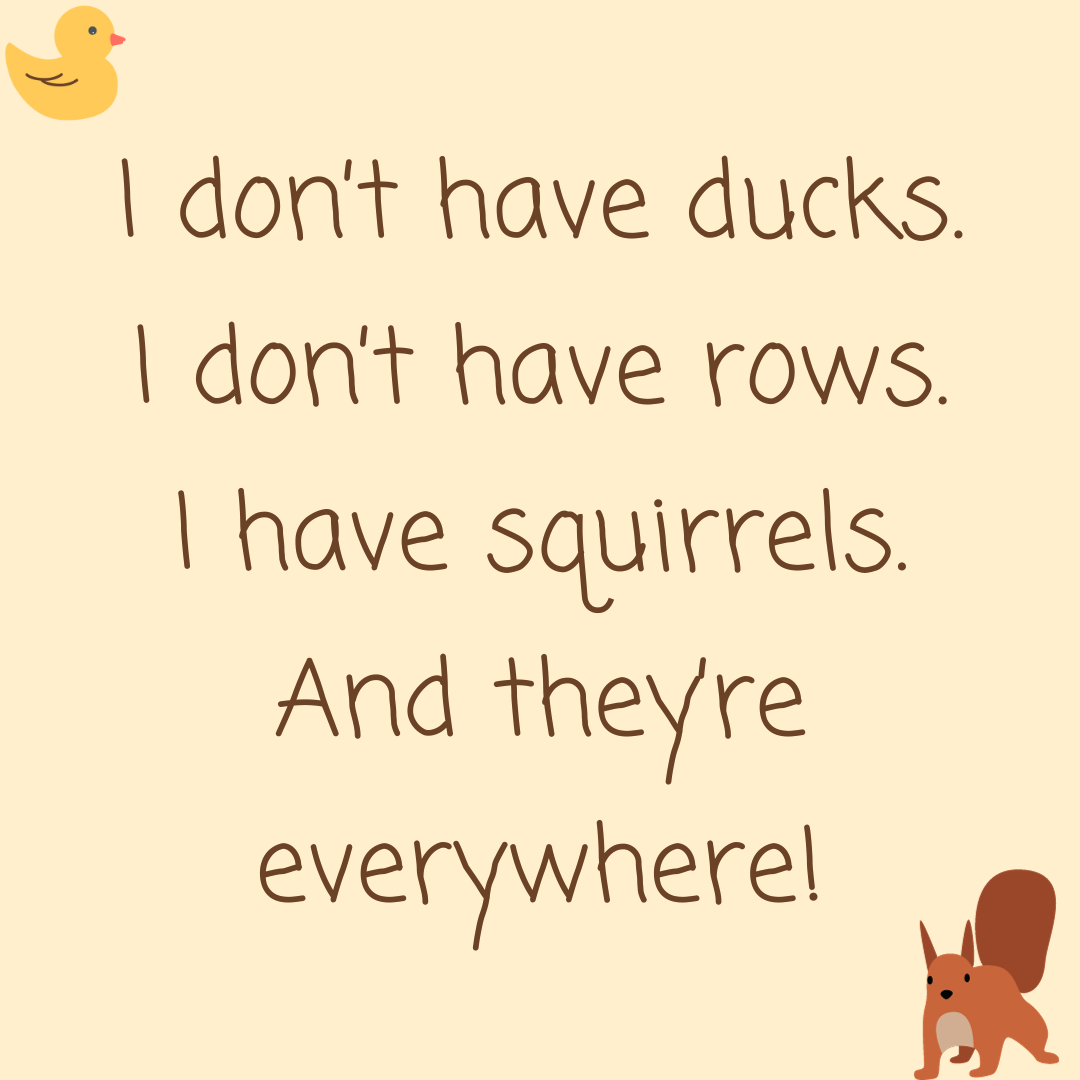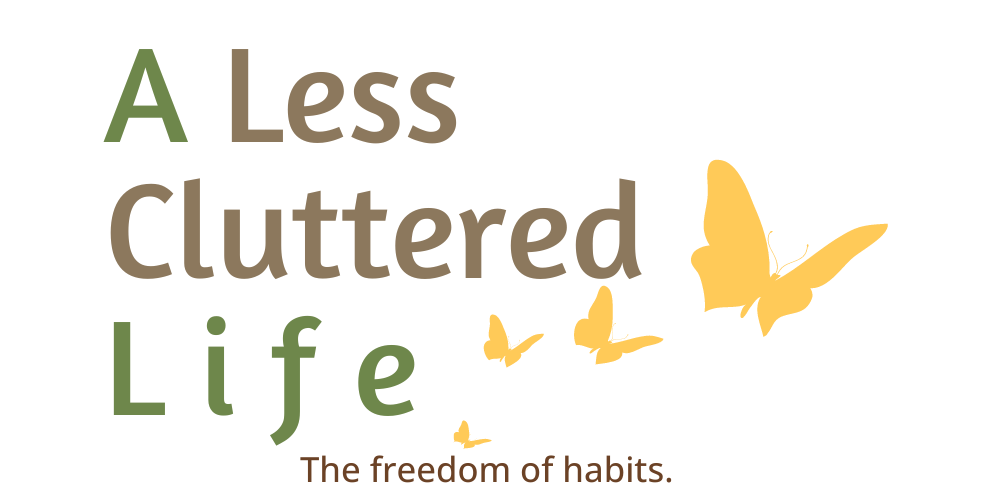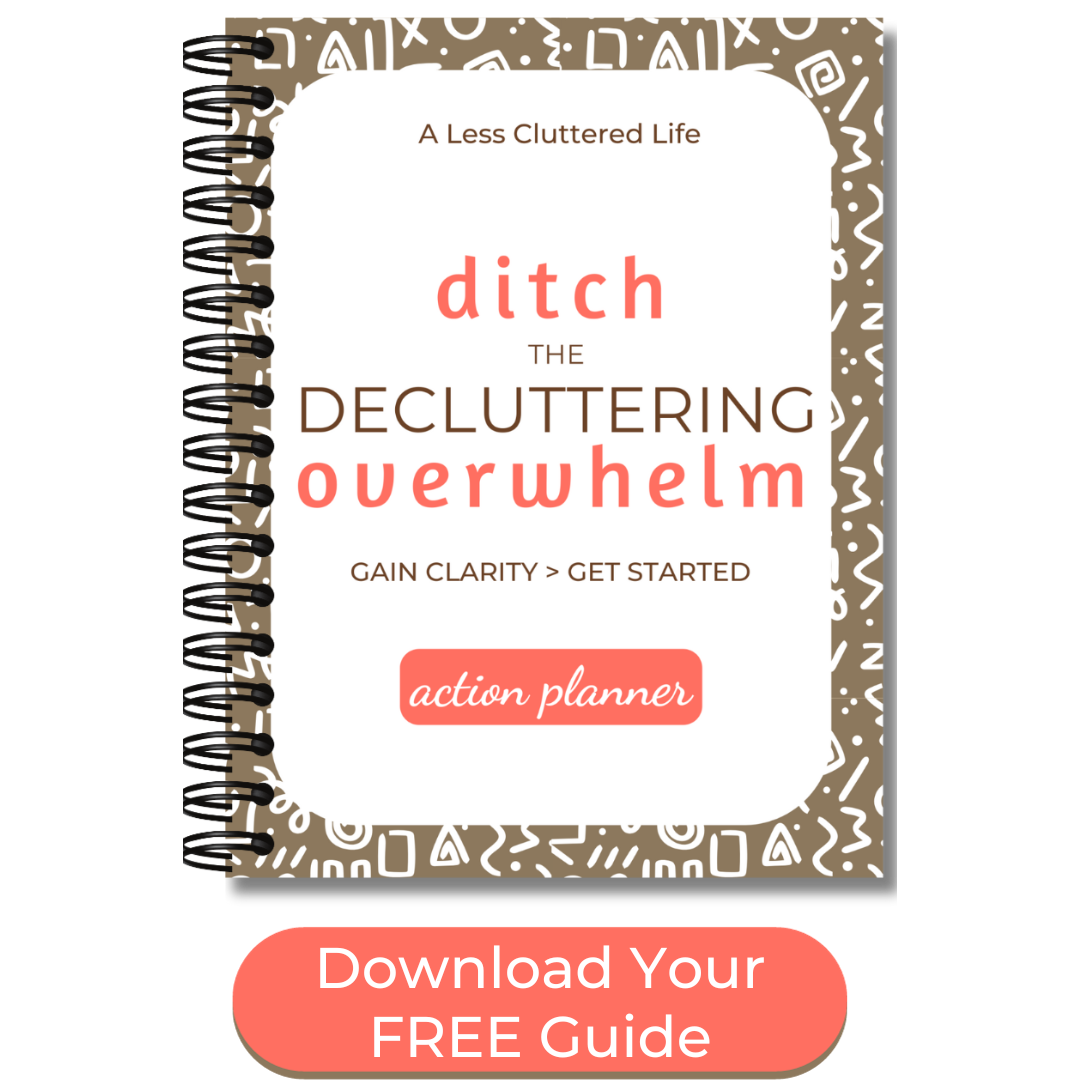|
by Susan McCarthy Getting and staying organized isn't about buying all sorts of storage bins and organizing products. Instead, it's about deciding where you will keep things so you can retrieve them when you want and return them so you can find the items the next time. 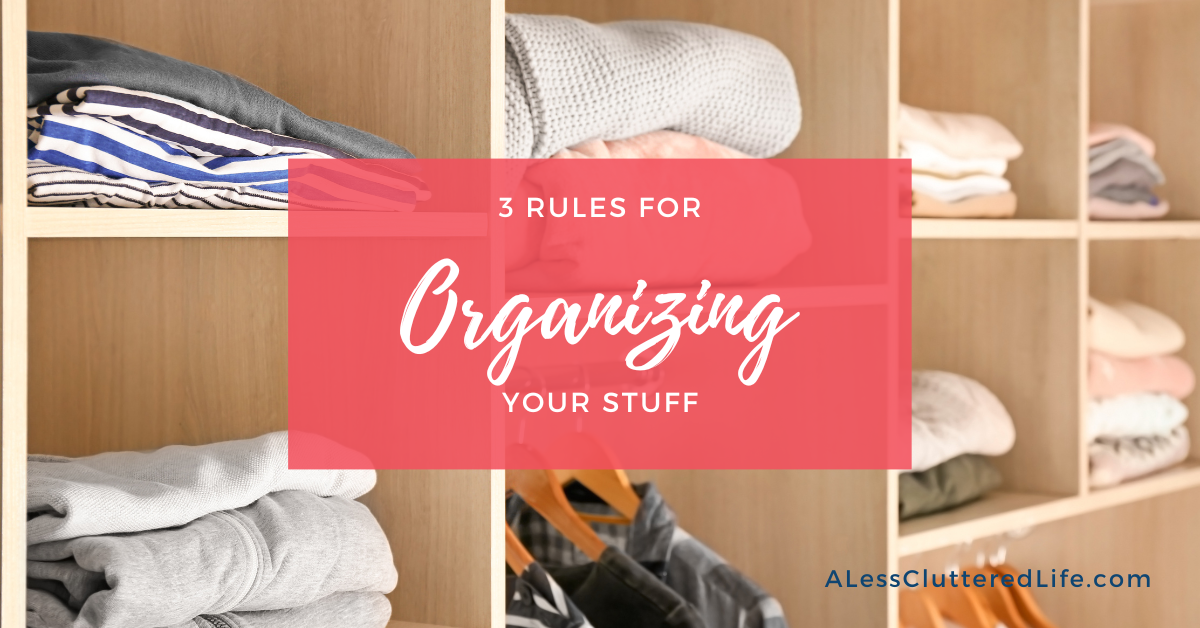 Image by Hans Braxmeier from Pixabay Growing up, the rule my brother and I heard over and over was that when we finished playing with something, we needed to put it away before taking out another toy or game. It was a good rule for staying organized. We did live in a small house, so there wasn’t a lot of space to sprawl. Ironically, over the years, my parents acquired and kept more and more stuff. Every time relatives moved or died, we received furniture, bedding, curtains, towels, and assorted knickknacks. All the stuff stayed and got added to the things we already had. Over time, the walls closed in on us as furniture and storage boxes lined the walls. When my brother moved out, his tiny bedroom became the drop zone for things that couldn’t fit anywhere else. Eventually, the only uncluttered space in that room was the bit of floor required to swing the door open (and not all the way). When I emptied my parents’ home, I found bags of old bills squeezed beneath furniture and closets bursting with clothing and other items (I had to lean my weight against one closet door to compress the clothing inside and get the door to latch). I found a year supply of things like tuna fish, shampoo, nail files, and facial tissue all stored in numerous locations throughout the house. With stuff stored in so many locations, it was easy to see how they’d lost track of what they owned. Organizing rules to live bySome people balk at the idea of organizing their home because they associate order with being an uptight neatnik. If your parents demanded order at home and you had to keep your bedroom to their standards of neatness, then you may have rebelled when you went out of your home and refused to tidy anything. Or maybe your parents found it easier and faster to organize things for you. This could have meant that you struggled to find things that your parents had put away to their standards…or maybe some of your possessions would go missing when your parents decluttered the things that they’d decided you no longer needed. So, no matter your age or how many years you’ve had your apartment or house, you may still find yourself mystified by where to keep things so you can find them when you want them. Why and how to organize the things in your homeFirst, let me clear up some misconceptions about organizing. Organizing isn’t about decanting your dry goods into Mason jars and turning your pantry shelves into an Instagram-worthy spot. It’s also not about fussing because someone put something down six inches to the left of where you think it belongs. (I still remember my parents getting into arguments about not being able to find the mustard because someone putting the bottle in the wrong spot on the refrigerator door…all while being unable to open the refrigerator door properly all because there was so much stuff taking up space in the kitchen.) Organizing your home should make your life easier. You won’t give up trying to locate something you know you own and end up buying a duplicate at the store (wasting time and money). Putting things away isn’t a matter of simply hiding things from sight. You put things away in drawers, cabinets, and closets so you can find them later. Organizing isn’t about creating an illusion of order. I have a very practical take on organizing. I think that where you put something should make it easier for you to retrieve and return the item you want, when you want it. This means that organizing comes down to, “where are you going to look for that thing when you need it?” Hmm, look, there is nary a mention of organizing supplies in that phrase. How to organize your home like a professionalDifferent professional organizers have different theories on organizing your home. Some prefer to start with organizing supplies – if every surface in your home office is covered with stacks of paper, they’ll have to buy a filing cabinet and folders before touching a page. Others will want to sort through the papers and see how many you will keep before figuring out if a file cabinet is warranted. While both methods have their merits (which is why both methods exist), I’m going to recommend that you declutter before you try to organize anything. In fact, after you declutter, try living with less stuff for a while before deciding that you need an organizing gadget to keep things tidy. In some cases, the disorder is caused by having too much stuff in a space. When there is less stuff, the space is more organized. Organizing products are warranted when they help resolve a problem. For example, if your stack of sweaters, jeans, or tee shirts keeps tipping over, then vertical shelf dividers may be the trick to keep your stacks upright. File folders exist so you can more easily find the paper you need. After my husband and I went through a few different spice racks and other organizing tools, we ended up simply setting the bottles from the store on a shelf in a cabinet by the stove. Not fancy. Technically, not even organized, but it works for us. The lesson? Do what works for you. Just because a product exists doesn’t mean you need to use it. How to organize your homeIf you’ve read other articles about organizing your home, you may have encountered the rule to give everything a “home.” Again, this isn’t fussy, put it here or else kind of rule. You have a home. You don’t go wandering into the neighbor’s house because you aren’t certain where you belong. And within your home, you have rooms which conveniently give you categories for where stuff belongs based on the purpose of the room. If you have kitchen stuff in your bedroom, you either live in a tiny studio apartment, or you have an issue with deciding where stuff belongs. Think about how you use the rooms in your home. If you use a corner of your bedroom as your home office, then it’s understandable that you have piles of papers in your bedroom. But that still doesn’t mean that you want to allow the papers to sprawl to your bedside or the top of your dresser. So, if a room has multiple uses, it can help to break your room into zones. This is my sleeping zone. This is my getting dressed zone. This is my crafting zone. This is my food preparation zone. You get the idea. My office area (a corner of my basement) gets used for work related to my business. This is also where I do the online aspects of my volunteer work. And I make handmade cards in this area since I need to run a die cutting machine with my computer. Oh, and in inclement weather, I watch exercise videos on my computer and so I keep hand weights and a yoga mat in the area. Having so many overlapping zones in such a small space means that things can get messy…frighteningly fast. The stuff accompanying each activity gets its own small footprint and I need to return things to their space after they get used. This is the whole, “a place for everything and everything in its place,” rule. When things don’t get put away in my little workspace, things get messy. However, now that I know where things belong, they go back to their home. Clutter isn’t always something you have to get rid ofFor some, the idea of clutter refers to anything they think they should get rid of – whether by trashing, donating, or selling it. However, clutter is more than unnecessary stuff. In some cases, clutter can be things that get used but weren’t put away where they belong (perhaps because you haven’t identified where that is). That stack of papers on your kitchen counter is clutter because the papers don’t belong there – they belong in your home office. To limit this type of clutter you need to decide where something belongs, and you need to practice bringing things to their home. Of course, decluttering means that you won’t get distracted by things you don’t use and need. If something’s home is in someone else’s house, donate or give away the thing. Don’t waste time organizing the things you don’t even need. How to organize: a step-by-step guideRemember, how you use (or, how you want to use) each room in your home indicates where things belong. You can then look at pieces of furniture in a room and identify how you want to use it to support the activities in that room (displaying things and storing things also count as activities). Step One – decide on each room’s (and closet’s) purpose – Grab a notebook and walk around your house listing the rooms and closets. (Give each its own page.) List what you do in each room and what you store in each room and closet. If you have a partner or children, ask for their participation. Do the kids wish they could watch movies in that room in the basement while your husband wants to turn it into a man cave where his buddies can come over and watch sports or shoot pool? You won’t know where to put stuff until you know what happens in a room. Don’t worry, not every room should be in contention. You know what goes on in your kitchen, the bedrooms, and the bathrooms. If there are toys in the kitchen or parents’ bedroom, decide where the toys should be found. This doesn’t mean your child can’t play with the Etch-a-Sketch while you’re making dinner; but, when they’re done playing, they return the toy to their room. Step two – decide on the purpose of the furniture and built-in storage – A chair is for sitting, not for storing a pile of magazines. Your pantry cabinet is for food … so, why do you have canned goods in your laundry room? Your dining table is for eating dinner and not storing papers, gift wrap materials, and craft supplies. Do you want current issues of magazines displayed on your coffee table or should it be empty but for a vase of dried flowers? By deciding what you want to do in each room, you also define what gets stored (or displayed) where. When you know what belongs, it is easier to notice what’s out of place … and to know where to take that item. Group items that could get used together near one another. Group items that have a similar theme or use. (Office supplies tend to write on, cut, staple, tape, clip or pin paper.) Place items in convenient places. For example, have a hook or bowl near the door so you can leave and then find your keys. Know it’s okay to be quirky with where you store stuff if you and everyone in your family knows where it is. I don’t have a linen closet, so I use a cabinet in my kitchen to store sheets and towels. (I live in a bungalow where both the bathroom and bedroom are off the kitchen.) Let everyone know where to find and return things. Institute the rule, ‘if you move it; return it.’ Step three – practice returning items where they belong – Remember, organizing isn’t just about putting things away one time. Every time something gets used; it needs to be returned so it can be found the next time. One way of keeping the order you create is a method called “reset the room.” This means that when you finish in a room, you tidy and put things away where they belong so you can find them the next time. For example, if you struggle to find the remote control in the family room, first you need to give it a home and make certain everyone knows where to return it. Then, each time someone finishes in the room, they return things where they belong. Yes, the more people who handle something, the more chances there are for things to not get returned. Keep emphasizing the benefits to returning things (no frustration, no wasting time looking for the thing). How to be organized at homeBeing organized at home comes down to giving items a home so when you want to use it, you can retrieve it with ease. You then return items to that space so you can find it the next time you want it. Don’t worry if you don’t organize things perfectly the first time. Even professional organizers will organize something (for themselves or a client) and then tweak or change the system they created because it isn’t working. That isn’t failure. It’s getting more information about what works best in your home. More Resources to Help You Stay Organized
0 Comments
Your comment will be posted after it is approved.
Leave a Reply. |
Categories
All
Hi, I'm SusanI'm a former teacher who became a professional organizer (and not because I'm a natural-born neatnik). I live with my husband and fluffy cat on a river in Massachusetts. I crochet, make handmade cards, and love reading young adult novels. Learn more about my decluttering journey here. |
|
Copyright 2024 Susan McCarthy - Susan@ALessClutteredLife.com -
Privacy Policies |
Proudly powered by Weebly

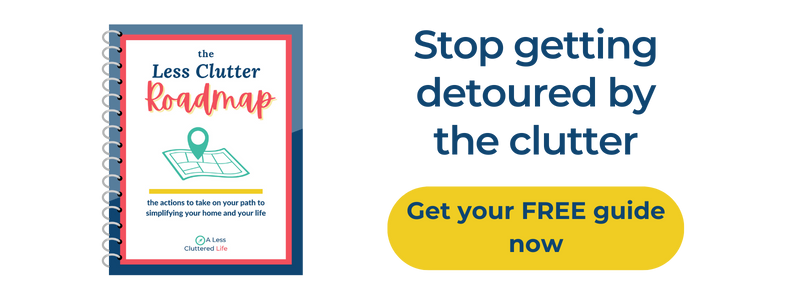
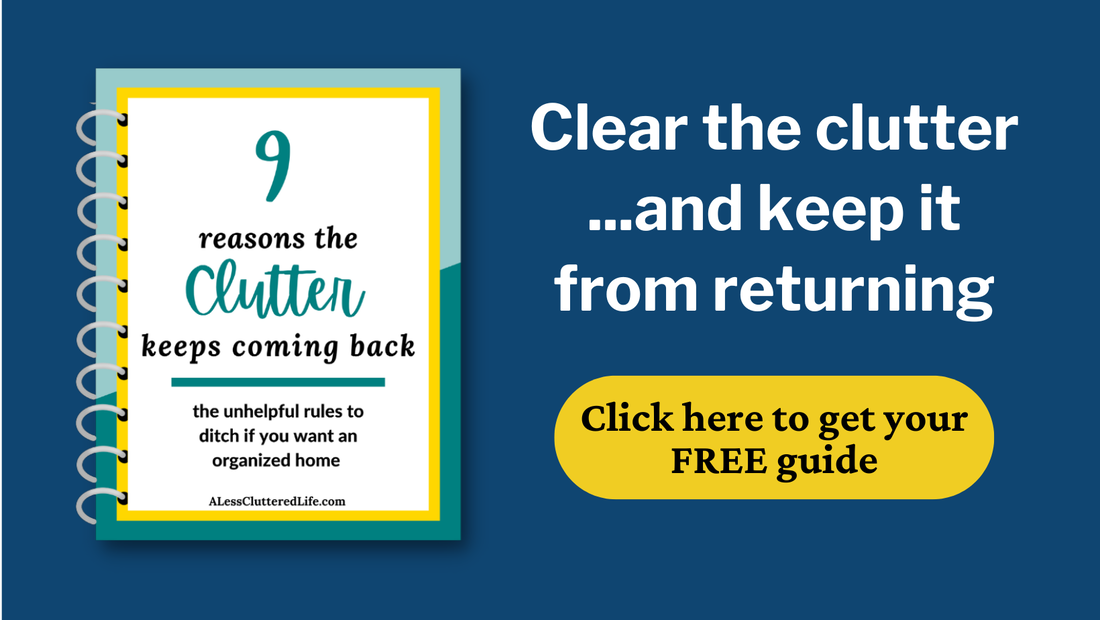
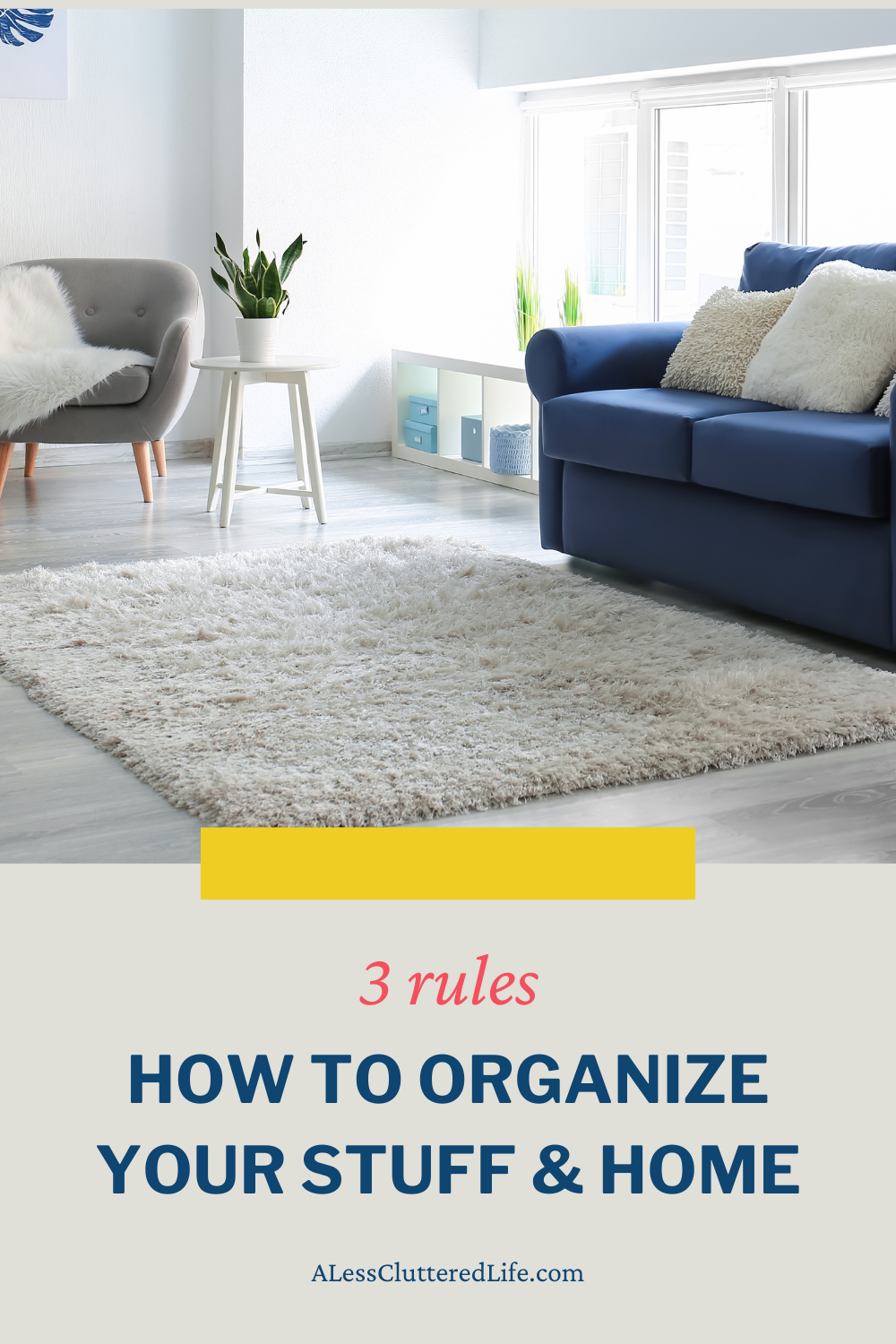
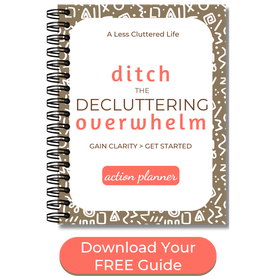
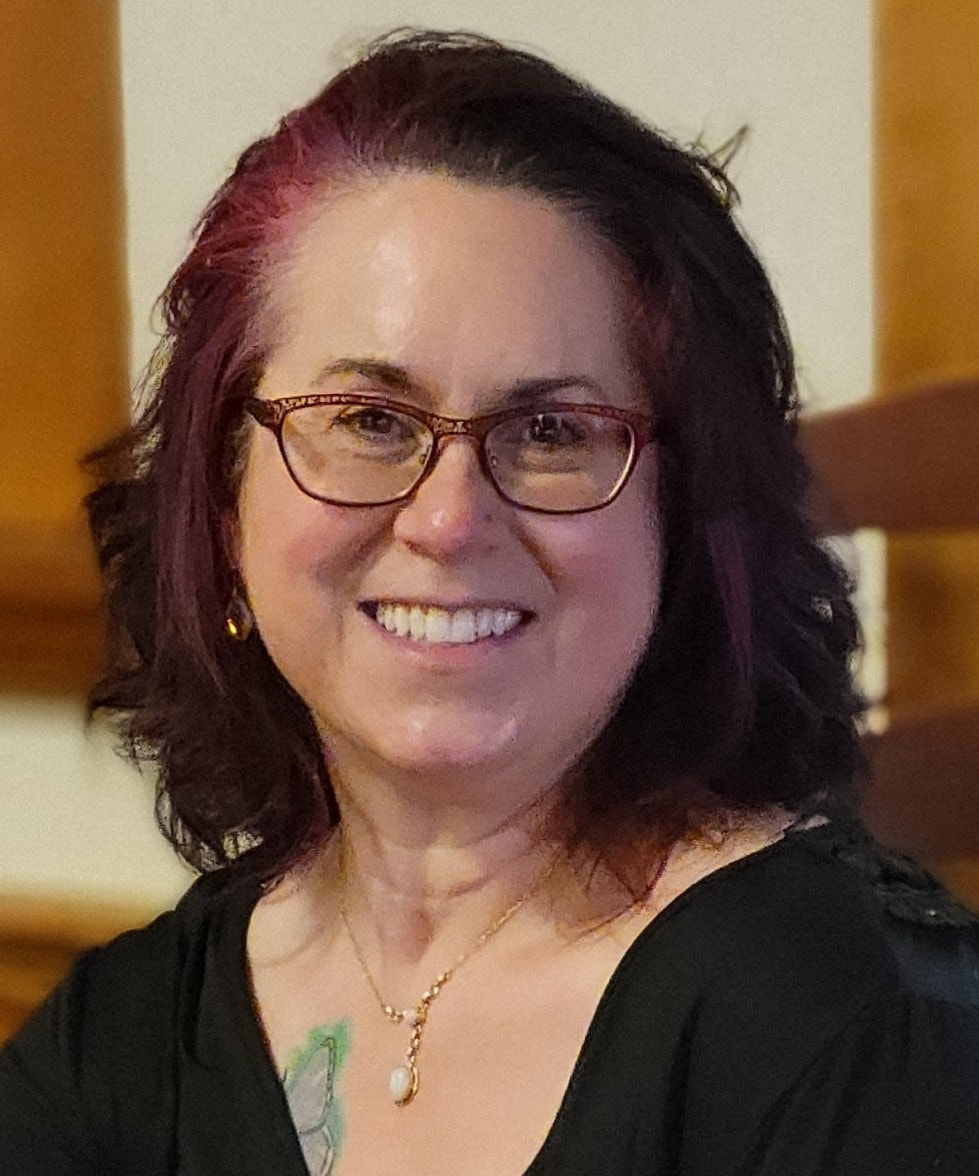
 RSS Feed
RSS Feed
